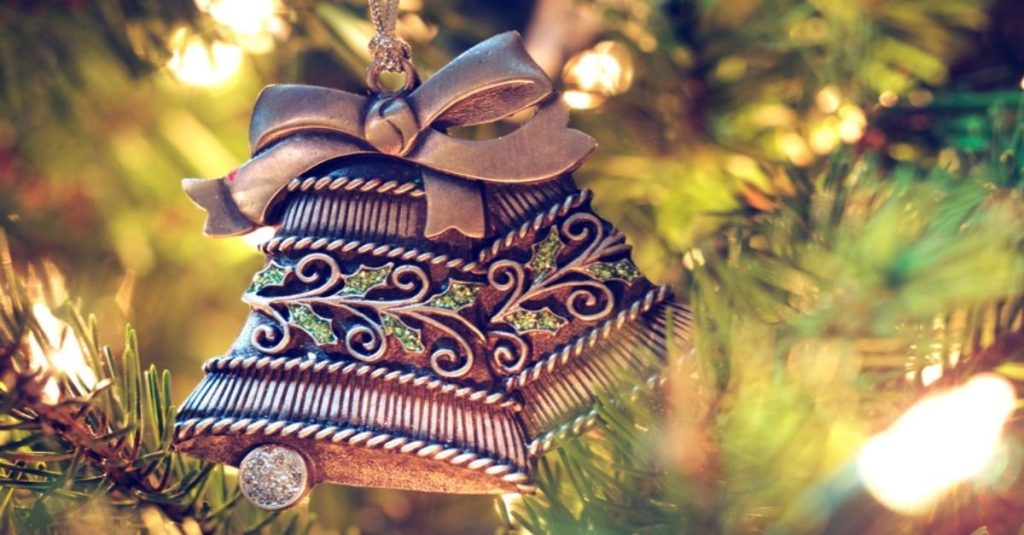No products in the cart.
Holiday
Christmas’s history, meaning, and symbols
Christmas, often known as the Nativity, Noel, Christmas, or Xmas (from the French Noel, an acronym for the root Emmanuel, which means “God with us”), is a holiday. Most Christians believe that Jesus of Nazareth was born. They hold that Jesus was born in Bethlehem in the Judean province of Judah, which at the time, between 6 B.C.E. and 6 CE, was governed by the Roman Empire.
The history and significance of the Christmas holiday (Noel)
Some nations observe this day on December 25, while others observe it once more the evening of December 24. Roman Catholics consider December 25 to be the official feast, also referred to as “the principal feast of the day” and the night of the 24th month. The “vigil” is the number 12. On December 24th, additional press organizations typically come. Christmas is observed by Eastern Orthodox on January 7 in accordance with the Gregorian calendar since they continue to use the Julian calendar to establish this date.
The letters Christ and Mas make up the word Christmas.
Jesus is known by the title Christ (the Anointed One). Mass is signified by the acronym “mas.” Christmas is created when the words Christ and Mas are written together. Christmas refers to the celebration of Christ, or the birth of Jesus.
Both the terms Christmas and Xmas indicate the same thing. Because Christ is known by the Greek names Christos, Spitós, or Xristos. The complete letter Xristos or Spiotós is represented by the consonant X, and the word Xmas is created by adding the neighboring Mas. Christmas so refers to the celebration of Christ.

This feast was observed along with Epiphany during the early centuries of the Christian era (first to second centuries C.E.). However, Saint Clement of Alexandria (150–215) spoke of a very special feast that was observed on May 20 as early as the year 200. On December 25, the Latin Church also observes it. Another explanation is that the early Christians abstained from birthday celebrations because they thought doing so amounted to heathen idolatry.
Because of this, no one observed Jesus’ birth throughout the first three centuries. By the fourth century, Christians were starting to desire to commemorate the birth of Jesus once a year, but they were reluctant to do so out of fear of being found out and persecuted by the Roman government because Christianity had not yet become entrenched at that point. acknowledged as a valid religion.
The “Sun God,” who on December 25 delivered light to the world, was honored by the Romans every year. Christians used this chance to commemorate the birth of Jesus and spread illumination. On the same day as the Roman “Sun God” feast, light and life were given to mankind. As a result, the authorities were unaware that Christians were commemorating Jesus’ birth.

Constantine, the Roman emperor, converted to Christianity in 312 after giving up polytheism. This man changed his plans to celebrate Jesus’ birthday instead of the “Sun God.” Pope Liberius designated December 25 as the official day to commemorate Jesus’ birth in 354.
For many years, Christian scribes recognized Christmas as the occasion of Jesus’ birth. However, academics started to put forth a different theory in the early 18th century. Christmas Day, according to Isaac Newton, was chosen to coincide with the Northern Hemisphere’s winter solstice, which was once observed on December 25. Paul Ernst Jablonski, a German, claimed in 1743 that Christmas was established on December 25 in order to coincide with the day of Sol Invictus in the ancient Roman calendar. Numerous other civilizations and religions also observe the festival toward the end of December before Christians do.
Kawaii 80s Horror Christmas Movie Lcon Movie T Shirts
An ideal shirt as a gift for Christmas holiday
BUY NOWWhat “Merry Christmas” means

Due to its connection to Christmas, the term “Merry” has already instilled in us a sense of joy and warmth. Despite the fact that Christmas celebrations date back to the fourth century AD, the phrase “Merry Christmas” wasn’t first used until 1699.
A naval commander who used the phrase in a friendly letter in 1699 is given much credit for its inception. A second instance of the phrase can be found in Charles Dickens’ “Christmas songs” from 1843.
Nearly everyone from all ages and beliefs sends greetings to one another around Christmas, not just Christians. Merry Christmas refers to joy and Christmas refers to the lambs of God (Old English usage). Instead of saying “Merry Christmas,” many people choose to say “Happy Christmas.” When Queen Elizabeth II herself spoke the words “Happy Christmas” in the 19th century, they quickly spread throughout the globe.
Merry Christmas to everyone was substituted for “Happy Christmas to all, and to all a good night” in numerous reprints of the 1823 poem “A Visit to Saint Nicholas” by American poet Clement Moore.
Most people in Ireland and England use the phrase “Merry Christmas” these days. Many people will also occasionally shorten the word Christmas to “Xmas” to save space. However, it must be acknowledged that there is no term or phrase more well-known than “Merry Christmas.” Greetings for a joyous and blessed holiday season!
Christmas From Another World Best Graphic Tee
An ideal shirt as a gift for Christmas holiday
BUY NOWChristmas meanings and symbols
Advent wreath
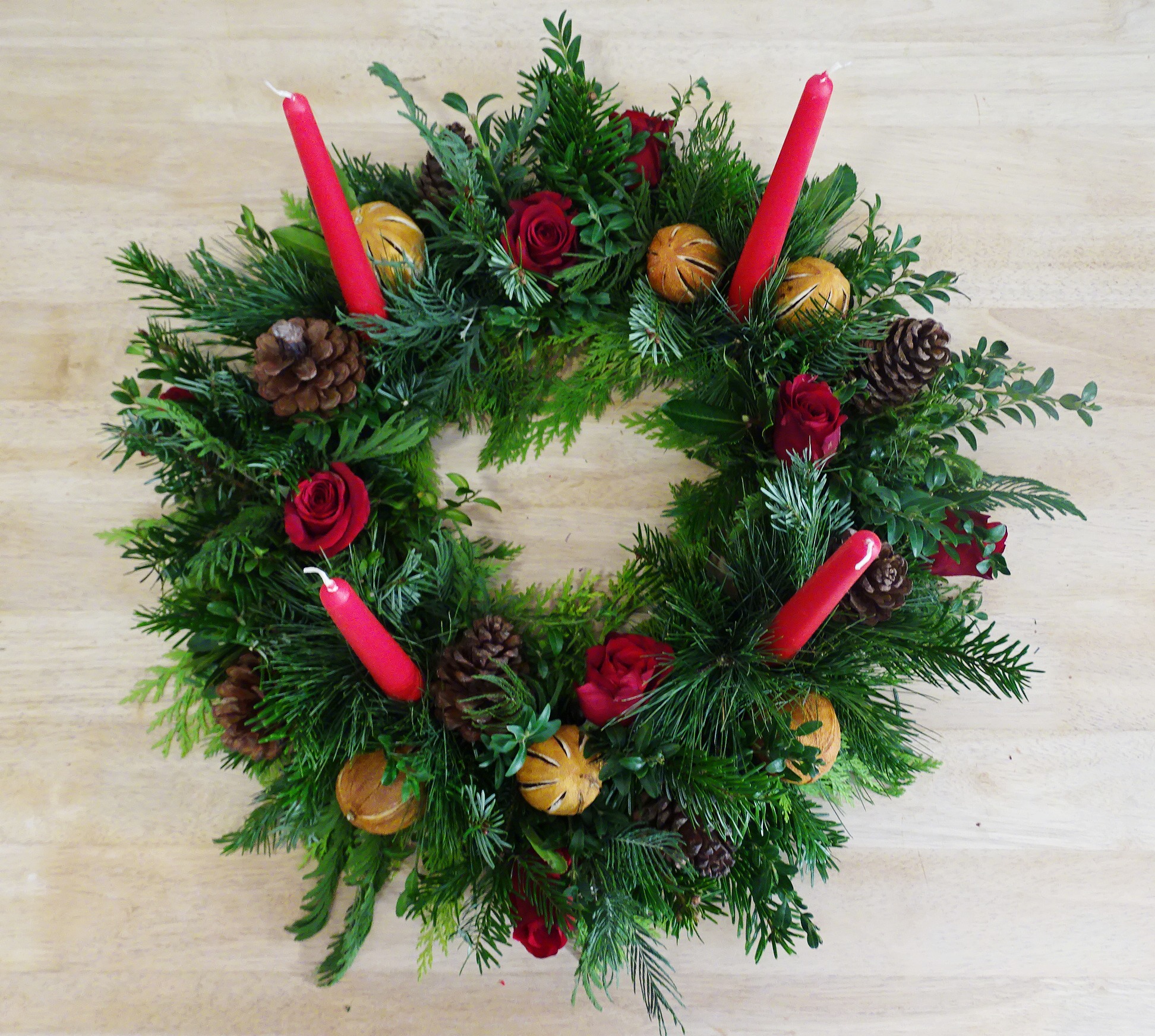
A green branch and leaf circular known as an advent wreath is frequently displayed on a table or hanging prominently for all to see. As a sign of the approaching end of winter, trees are frequently adorned at gatherings during the winter solstice. put within 4 candles on the leaves. The Lutherans in Germany began this tradition in the sixteenth century to symbolize the conflict between light and darkness.
The wreath of spherical leaves stands for God’s eternal nature and unending love. The color green stands for the expectation that the Savior will rescue mankind. Three of the four candles are purple, the color of Advent; the fourth candle is pink, the color of Gaudete Sunday, and the third Sunday of Advent.
I’m The Tennis Elf Family Matching Group Christmas TShirt
An ideal shirt as a gift for Christmas holiday
BUY NOWChristmas cards

It all started in 1843 when wealthy English merchant Henry Cole commissioned London painter Horsley to create a lovely card for him to deliver to his friends. Horsley published the first card in history during Christmas that year, and 1000 copies have since been created. In the ten years after the British Government approved a rule in 1846 allowing anybody to send letters to anyplace at a low cost, Christmas cards immediately took off and were popular in the UK. Soon after, this trend was introduced to Germany; however, Americans did not adopt it until 30 years later.
Santas Favourite Tennis Player Men Apparel, Christ T-Shirt
An ideal shirt as a gift for Christmas holiday
BUY NOWChristmas gift

People demonstrate their love for friends and family through gifts. Christmas gifts can have a profoundly religious significance for certain people. It commemorates the birth of Jesus, a gift from God to mankind.
Three Eastern kings came to Bethlehem to pay their respects when Jesus was born weeping in a manger. They came bearing three priceless gifts: myrrh, frankincense, and gold. Myrrh portrays the image of Jesus being crucified on the cross or, more particularly, Jesus Christ. Gold signifies Jesus as King (i.e., Son of the Father – King of the Kingdom of Heaven). Jesus’ death in order to save humanity.
Even though the three kings were extremely wealthy, the poor and those with few possessions came what they could to honor the baby Jesus. Jesus received fruit and homemade tiny toys from the shepherds.
To deliver gifts to sleeping children, Santa Claus used to soar through the air on his reindeer, travel to the home holding the Christmas tree, and enter through the chimney. He frequently wrapped the gifts in socks.
The custom of using cribs and mangers at Christmas dates back to the myth that Jesus was born in a tiny cave inside the shepherds’ manger in Bethelem.
Cave and manger
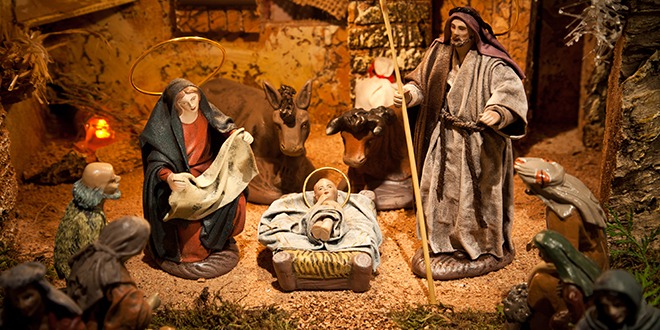
Today, on the evening of December 24, churches display caves with mangers, inside of which are images of the Virgin Mary and the Child Jesus, flanked by donkeys, the Three Kings, a few angels, and saints. The three kings are being led to God by Joseph, who is on the roof, using a light emanating from a star. Everyone prayed to the merciful God to deliver humanity from war, famine, and sorrow.
Christmas tree

Since the 16th century, the Christmas tree has its roots in Germany. This tree can withstand extreme weather conditions and yet seem sturdy, solid, and evergreen. The image of this tree gradually became more prevalent, and it was regarded as the festival’s focal point. Participants clasped hands and danced around the elaborate pine tree both inside and out while carrying flowers, apples, roses, and colored paper. The Christmas tree first became popular in England in the 19th century.
Germans in Pennsylvania introduced the Christmas tree to the United States in the 1820s. Nowadays, people frequently purchase a pine tree close to Christmas and adorn it with stars, pearls, shimmering tinsel, flowers… In the celebration to usher in the new year, the pine tree is seen as a representation of optimism and fresh energy.
Gifts in socks

According to legend, the other family had three girls who were of marriageable age, but no guys were interested in them since their family was too impoverished. Because he was so kind, Bishop Myra tossed the gold money down the chimney of the residence of the three girls. The identical pair of stockings that the girls had hung by the fireplace were covered in gold coins that fell from the roof. It goes without saying that you can see how happy they are. They got the chance to make their wish come true.
Everyone wanted to be lucky because they had heard about the miracle, so they imitated the three girls by hanging their stockings near the fireplace in the expectation of finding gifts.
The most gifts are hoped for by kids. Everyone in the family used this occasion to give the kids gifts in the hopes that they would be good students and follow instructions. Since then, it has become customary for kids to hang socks near to the fireplace so that Santa Claus will leave them presents in their dreams.
Christmas Star
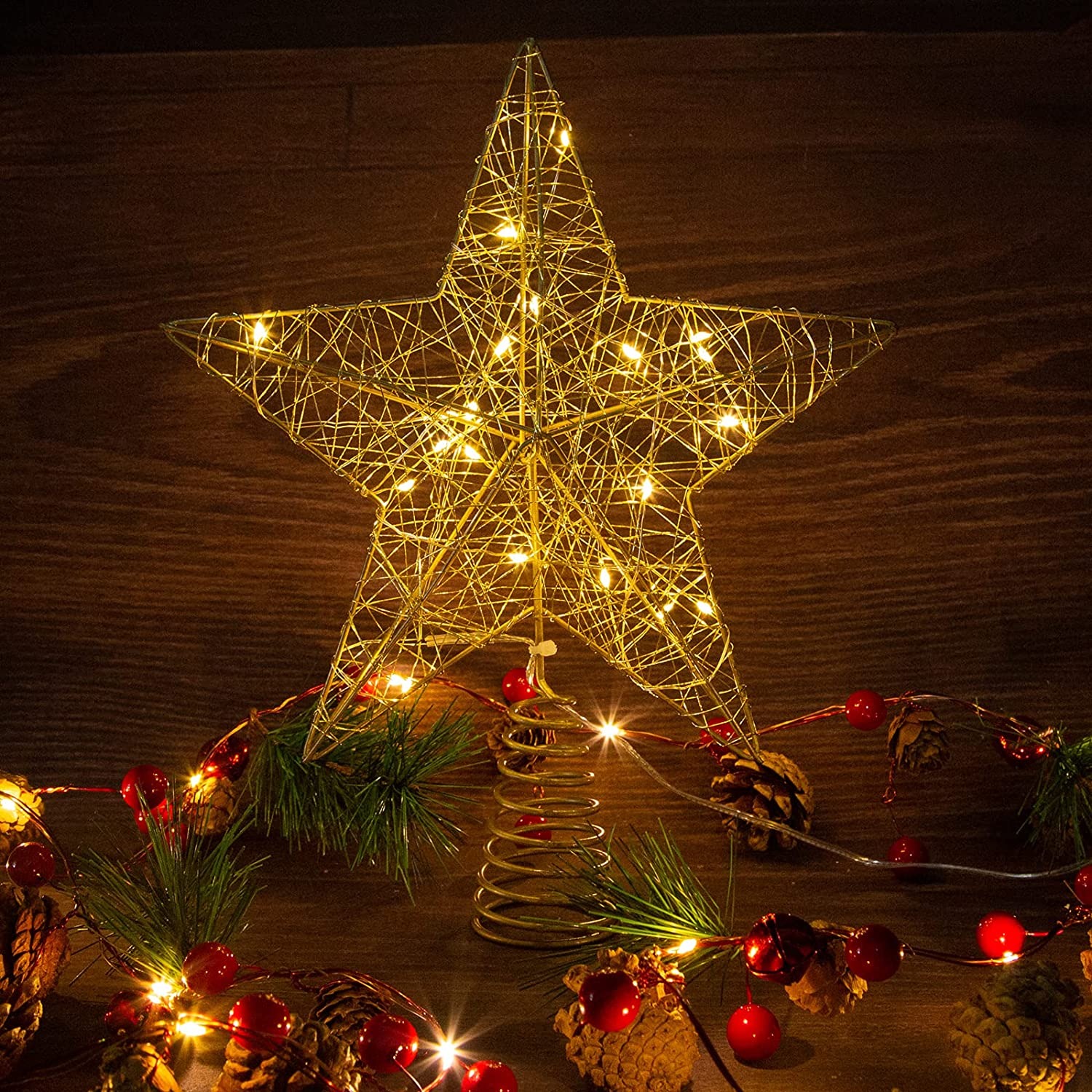
During the Christmas season, the 5-pointed star is frequently seen in vibrant patterns. At the top of the church bell tower, a large star is suspended. Stretching the paper outward from there reveals numerous tiny stars, hanging lanterns, and lovely flowers on all four sides.
Christmas’s star has a unique significance since, according to history, a bright star appeared when Jesus was born. It is visible from hundreds of kilometers away. Three kings from what are now Iran and Syria were said to have come from the distant east and believed that if they followed the starlight they would undoubtedly come across a miracle known as the feast of the three kings.
The three then proceeded to travel in the direction of the light until they arrived in Bethlehem, the city of Jesus’ birth. These three men bowed down before the Lord and presented him with offerings of incense and valuables made of gold and silver.
To commemorate the aforementioned legend, the star is placed in the most opulent locations in synagogues and other religious buildings throughout the Christmas season. The star’s significance also makes it a symbol of God’s miracles.
Santa Claus
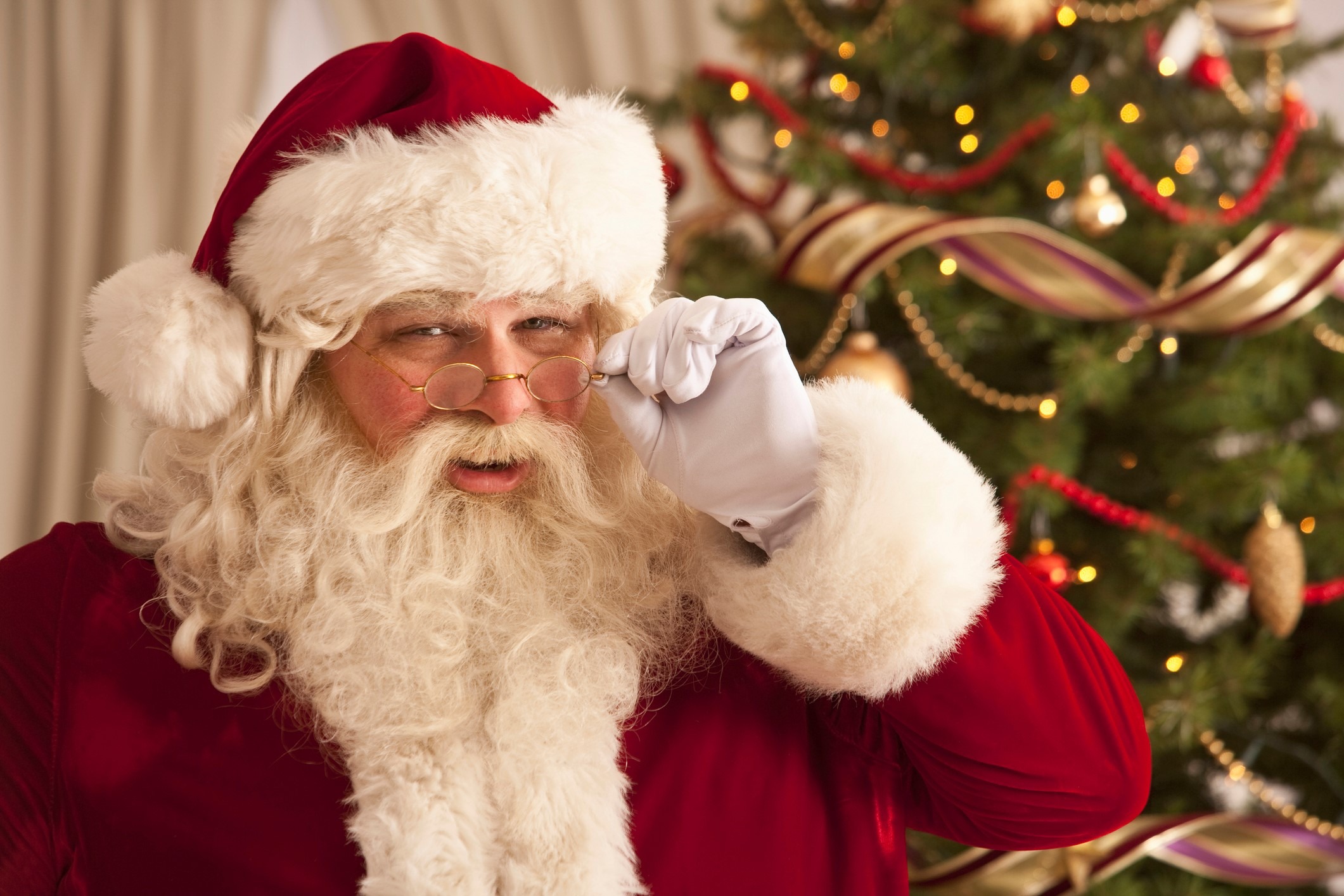
The term “Santa Claus” or Saint Nicholas first appeared in Turkish literature in the fourth century. He was extremely religious and devoted to Christianity from an early age.
Saint Nicholas is particularly praised for his generosity and love of children. In addition to being a saint, Saint Nicholas is also the patron saint of seafarers, the island of Sicily, Greece, and Russia. Children in the Netherlands would hang their wooden shoes by the fireplace in the 16th century in the hopes that St. Nicholas would bring them food.
The name St. Nicholas is pronounced by the Dutch as Sint Nicholaas, later changed to Sinterklaas, and finally read as Santa Claus by Anglicans.
Clemon C. Mor penned the well-known carol “A visit from St. Nick” (Saint Nick’s visit) in 1882, and it was eventually retitled “The night before Christmas.” Mor is credited with modernizing the image of Santa Claus by portraying him as a chubby, humorous old man dressed in a red suit.
Santa Claus’ red attire

Because he still rides a horse and wears his old woodcutter attire when he visits the youngsters to deliver gifts, Santa Claus has not yet fully transformed into Santa Claus. When the village’s headman Nicholas passed by his house one day, he was immediately mesmerized by the rickshaw pulling two stunning reindeer with adorable bells attached. The landlord had a bright red fur hat on his head and was dressed in a bright red suit. “I also deserve it; my horse is too old and complaining, and these clothes can’t withstand the winter’s chill much longer.”
To find the ideal red dress, Nicholas went to the top seamstress in the neighborhood. Strangely enough, when the outfit was complete, it was so large that Nicholas appeared to be inside of it. Oh, I wrecked your outfit; look at how sloppy it is! “I’ll consume candy to make people grow up like clothes, so it’s all right. the trousers? I’ll don a pair of black boots to clear up the mess. I’ll look fantastic in this clothing, so don’t worry!”
And thus the story of Santa Claus began, but it wasn’t until a few decades later that the red suit that became linked with the story made an appearance.
And now proudly proclaim to everyone that “Santa Claus on a sleigh with two reindeer is entirely real.”
Mistletoe and holly
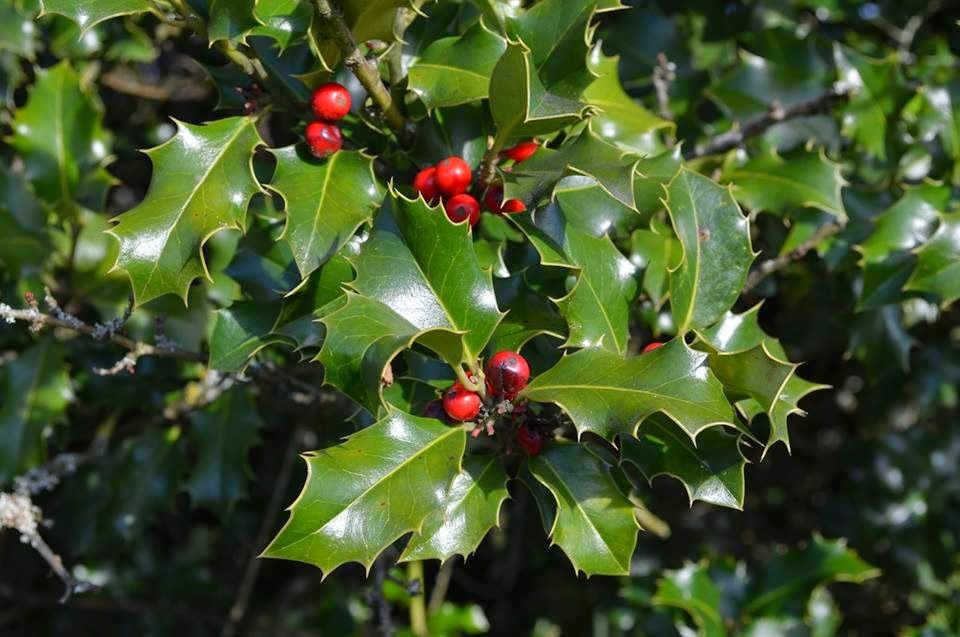
Pagans used mistletoe to welcome winter two hundred years before Jesus was born. They frequently choose this particular plant and use it as interior decor. According to their beliefs, this plant has the unique capacity to treat a wide range of illnesses, from female infertility to food poisoning. Mistletoe is seen as a symbol of peace and harmony by people in Scandinavia. The mistletoe was also associated with their goddess of love, Frigga. This idea is likely the origin of the tradition of kissing under the mistletoe. Because mistletoe has pagan origins, the church first forbade its usage during the holiday season. The priests recommended using holly as a Christmas tree rather than mistletoe.
Poinsettias

The poinsettia plant was introduced to the United States in 1882 by Joel Poinsett, the first American ambassador to Mexico. Mexico is the poinsettia’s native country. The poinsettia was seen by the Mexicans of the 18th century as a representation of the star of Bethelem. A boy, according to mythology, brought a handful of leaves to the manger because he had nothing else to give the Baby Jesus. My companions made fun of me, but as I placed the branches at the Child’s feet, the branches blossomed into lovely red flowers.
Candy stick

A confectioner in India sought to use a confectionery emblem in the 1800s to convey the significance of Christmas. One of his candy bars was bent into the shape of a sugar cane as he began to develop his concept. He infused images of Jesus’ love and self-sacrifice through the sugar cane. White is a symbol for Jesus’ innocence and purity.
The three little stripes then stand in for the hardships that the Lord underwent before to his passing on the torturous cross. Additionally, those three stripes stand for God’s glorious trinity (the unity of the Father, the Son, and the Holy Spirit). To symbolize the blood that God spilt for mankind, he added a prominent stripe. Because Jesus is the shepherd of the people, the hook of the staff has the appearance of a shepherd’s staff. The stick will transform into the letter J, which represents the first letter of the name Jesus, if you hold it upside down (Jesus). Everyone is aware of the true meaning of Christmas now thanks to that candy producer.
Reveillon meal
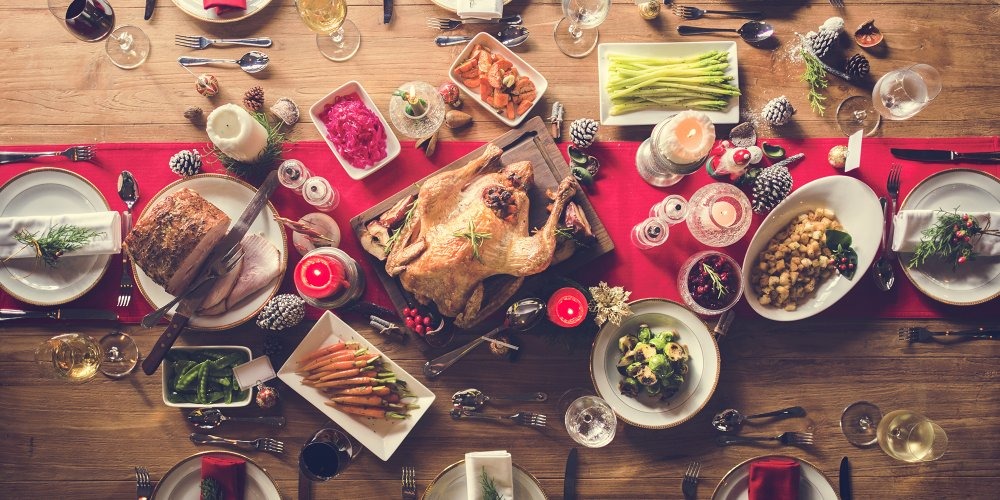
This dish must contain the three elements of water (carp, oyster), air (turkey or geese), and wood (wood) in Alsace, France (pork). The Mexican sailors who traveled with the adventurer Christophe Colomb brought the practice of eating turkey.
Christmas song
The song “Jingle bell” was written by J. Pierpont, but poet Carl Sandburg included it in a collection of well-known American folk songs he named “American song bag.” Contrary to popular belief, this song was not written on Christmas Eve.

The words, which are simple and straightforward, capture the spirit of the American people in favor of a successful snow season. It unintentionally turns into a Christmas carol thanks to the image of Santa Claus holding a gift bag full of toys while riding a reindeer automobile with jingle bells. When the German-Austrian-Prussian War came to a conclusion, priest Joseph Mohr wrote the song “Stille Natch, Heiligo Natch,” which became known as Silent Night, Holy Night. Later, it gained popularity in Austria and America; today, it is available in approximately 100 languages.
Buche Christmas Cake
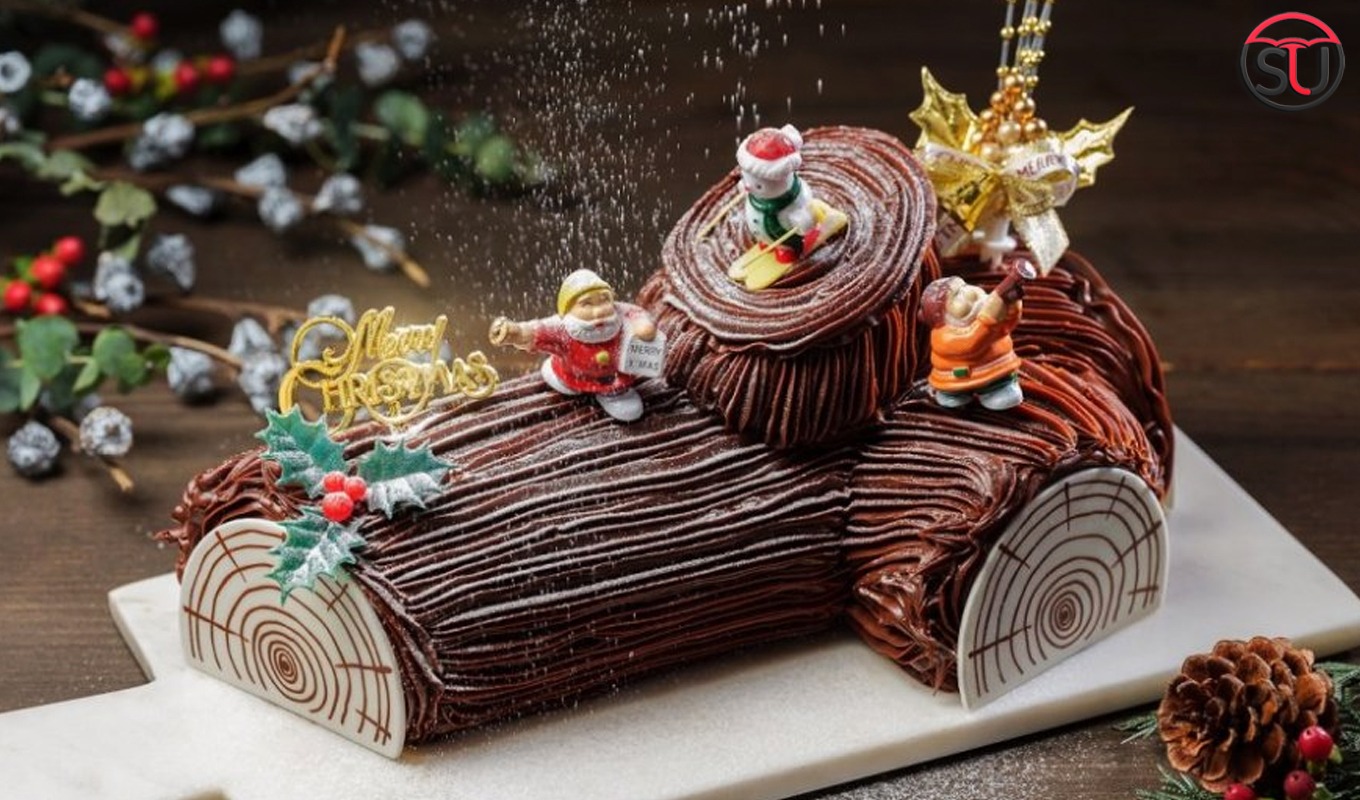
Westerners’ ancestors used to stack wood up the chimney because they thought that the more the fire shook, the more evil spirits would be frightened off. Currently, the practice is dwindling because fewer homes have chimneys. Instead, a baker’s idea in France in 1875 led to the creation of a firewood tree-shaped cake that has been enjoyed by all on Christmas Eve ever since.
Church Bells
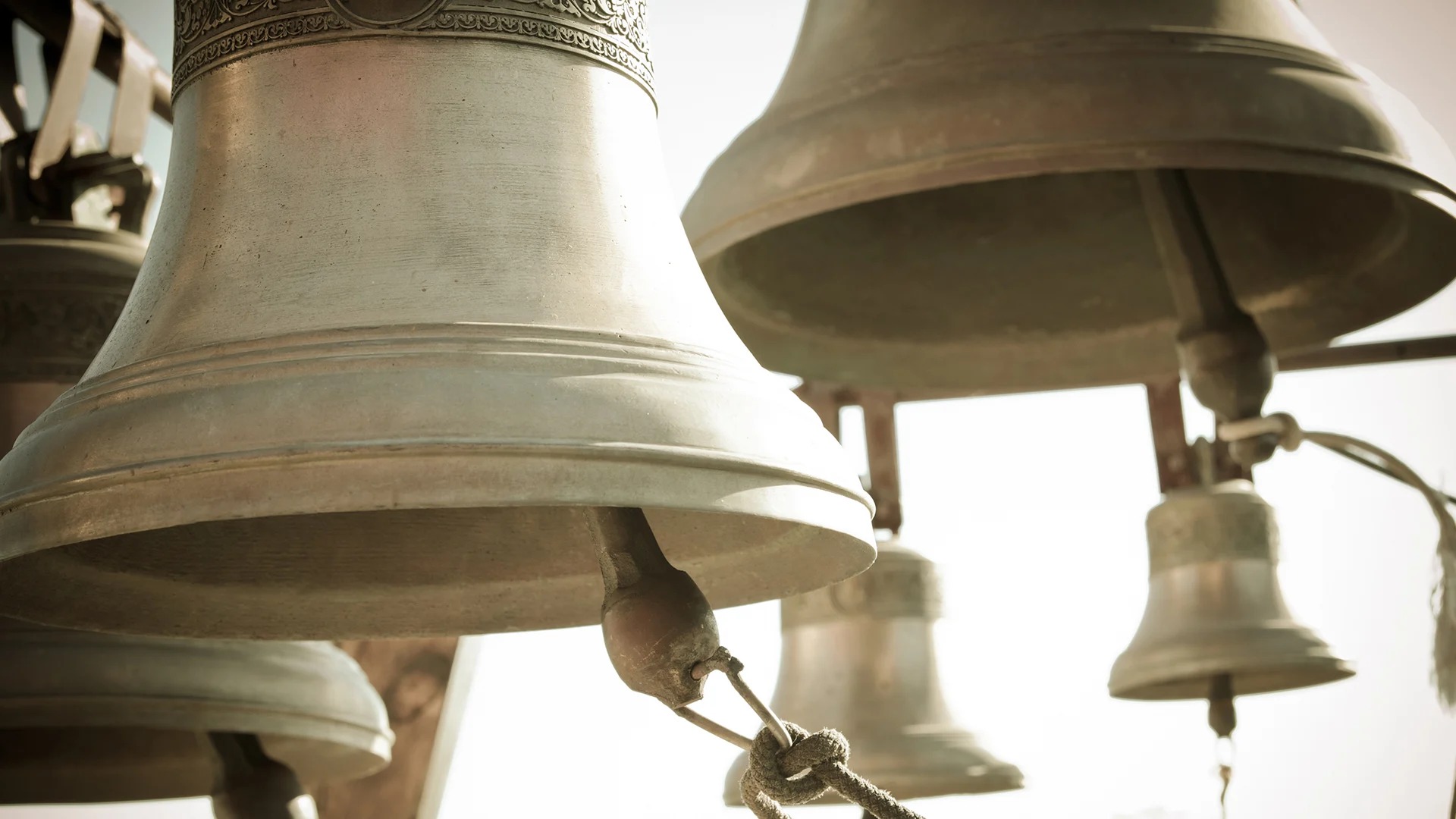
In various Asian societies, bells are used to announce to the populace whether a happy or sad event has taken place. This tradition was brought to Western nations to commemorate the Savior’s arrival on earth after the birth of the infant Jesus. To commemorate the birth of Christ, church bells sound throughout Spain at midnight.
Christmas Candles
Christmas Eve candles are the subject of many urban legends. Many people think Martin Luther was the first to take the effort to light numerous candles on the Christmas tree’s branches. He was in awe of the beauty of the light from the stars lighting on the tiny pine branch in front of his house when he went home one winter night close to Christmas. By affixing candles to the branches of the Christmas tree at his home to depict the Star over Bethlehem, he was able to reproduce this image.

Another tradition claims that a little child who got lost on Christmas Eve eventually found his way home owing to the candlelight shining through his mother’s window.
According to a different tradition, Saints Mary and Joseph located a spot to stay on the eve of Christmas by pursuing the light coming from the little entrance of an ox and donkey barn.
Besides, don’t forget to check out our website Seizeshirt for more about christmas gifts!

